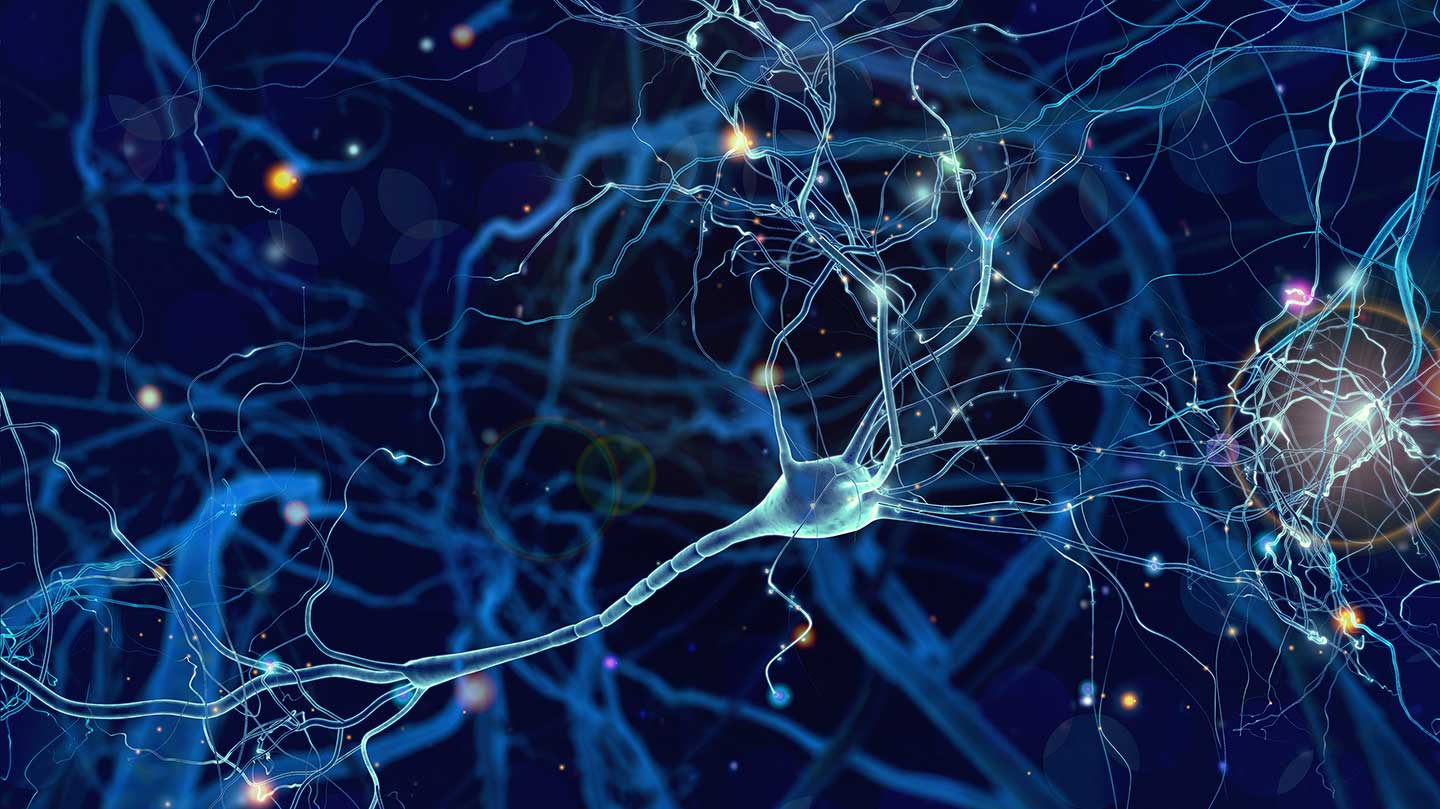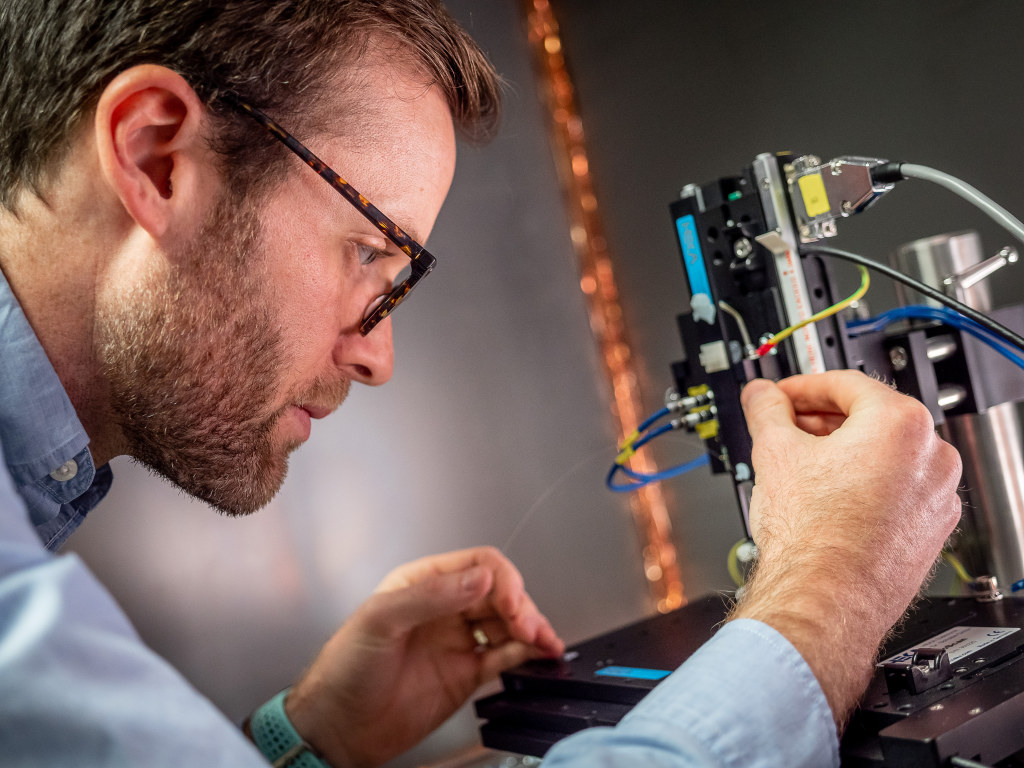
Brain Power
Chemistry professor’s NSF CAREER grant-funded project provides access to higher-level research to students underrepresented in the lab
Scientists have long known that chemical signals in the brain play a fundamental role in everything we do; basically, determining how our minds and bodies work – or don’t work. And while decades of research have shown that the movement of tiny molecules called neurotransmitters in the brain influence behavior and disease, there are still gaps in the understanding of that transmission process at the single-cell level because the mapping tools lack sufficient resolution.

That’s where Montclair State University Assistant Chemistry Professor Glen O’Neil and the students in his lab come in. O’Neil is embarking on a five-year, $500,280 National Science Foundation (NSF) CAREER grant to develop tools using semiconductors and light sensors that will produce higher-resolution chemical images to help scientists better understand neurotransmission in and around cells. This research also recently earned him a $100,000 Cottrell Scholar grant from the Research Corporation for Scientific Advancement.
“There is still not a clear understanding at the single-cell level of what happens to neurotransmitters when they leave the cell, because neurons are very small and the process happens very fast,” explains O’Neil. “We want to map out where and when neurotransmission happens and why it happens at certain locations. We hope to create the tools to help us answer those fundamental questions.”

O’Neil’s proposal for the NSF CAREER grant included a component for involving underrepresented students in the lab, as well as increasing the retention rate for community college transfer students by involving them in higher-level research. Six students, five of them female and some of whom are transfer students, are working on the study and he plans to bring in more.
“The idea is that being part of the lab will help transfer students transition to the University, help them fit in and feel connected so they will stick with it,” he says. “The students will be the ones conducting the experiments on this project.”
O’Neil and his students are focused on mapping one type of neurotransmitter – dopamine, which acts as the reward system base in the brain and plays a role in diseases such as addiction, schizophrenia and Parkinson’s.
“We hope to achieve an understanding of the signals. If we can do that, we can, perhaps, eventually develop therapeutic steps that will help people,” he says.

The group employs materials typically used for solar energy conversion by creating dopamine sensors made from silicon, which is used in solar panels, and gold nanoparticles. The ultimate goal is to grow neurons on these sensors and image the dopamine release in real time.
“The problem with the current basic technology is that it is really too slow. We can’t see where things are going. Tools that measure faster don’t have the required spatial resolution, and tools that have high spatial resolution can’t measure fast enough. So what we are trying to do is develop the sensors in the lab that are faster with higher resolution,” O’Neil says.
“We are using a model biological system; it’s not like there are Parkinson’s patients’ neurons that we can study. Hopefully, later down the line, if the technique works as well as I hope it will, we can apply it to more complicated biological systems.”
Katherine Schaffer, a junior commuter student from Long Valley, who transferred to Montclair State from the County College of Morris says she feels fortunate to have taken O’Neil’s analytical chemistry class, which led to her working on the project.

“It’s really fun and interesting research, and it’s such a cool idea,” she says. “Dr. O’Neil is a great role model in the lab.”
Senior Frank Rabboh, a first-generation college student from Totowa, is working in O’Neil’s lab on a grant of his own from the New Jersey Space Grant Consortium to develop 3D printed sensors that could be used on a long-term space mission. O’Neil encouraged him to apply for the grant, which gives him the opportunity to work in the lab instead of getting another job.
“It’s been awesome to work in the lab,” says Rabboh. “This semester I’m here three days a week, eight hours a day really doing deep research. It’s been eye opening to the research field.”
Students trained on this project are learning state-of-the-art fabrication, analysis, measurement, and characterization skills that O’Neil says will be useful when they enter the workforce or graduate school.
“Dr. O’Neil is an academic role model who values both research and education, and we are proud of the work he is doing to include underrepresented students in the lab,” says College of Science and Mathematics Dean Lora Billings. “His efforts are a wonderful example of how Montclair State University leads the way in providing access and excellence for our students in STEM education.”